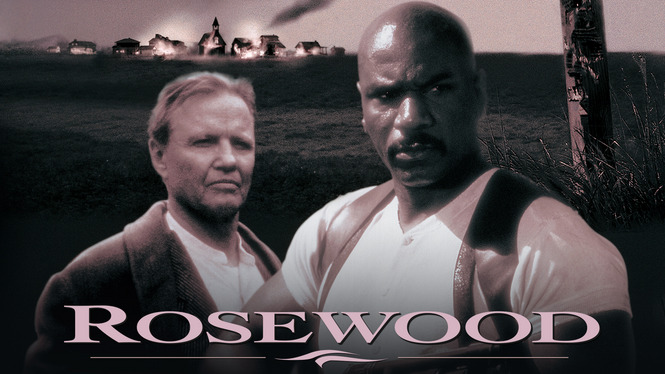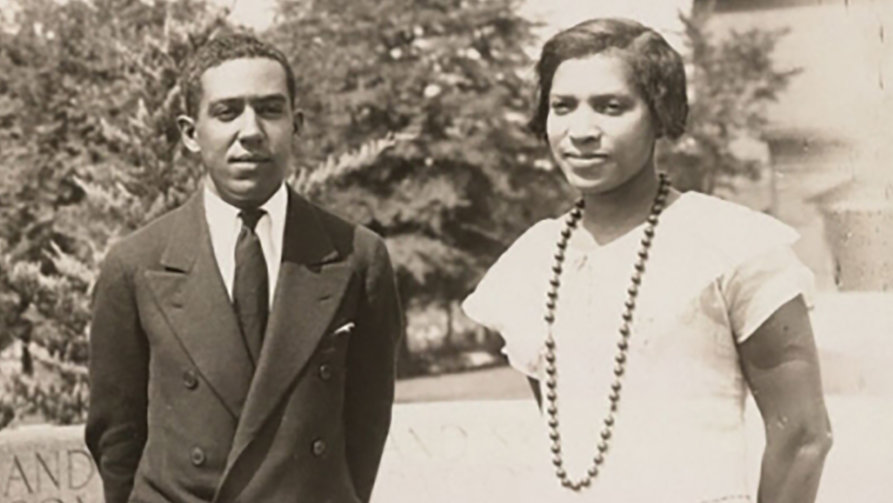A black man born in America faces the possibility of an early death from the moment he is conceived. This has been the case the moment the African stepped foot onto this continent in chains. However, today, instead of leather straps to a slaves’ back, the great grandson of a slave is strapped into an electric chair in America’s latest means of terminating its most hated minority, capital punishment. There is a real possibility of death by execution for every black man in this country. Throughout the past 400 or so years the forms and methods of executions have changed but the underlying premise has remained the same, if you are black and are accused of killing a white person you will be executed.
This reality persists because of the omnipresence of historical and institutional racism and the evolution of which is within the American criminal justice system. We contend that systematic racism is the only explanation for the disparity between the percentage of African Americans on formal death row is 40% and African Americans in the American population is 13%.
Evolution of Racism and Justice in America
In 1989, the New Jersey State Supreme Court conducted a survey of 169 Superior Court judges and 113 court managers, to determine if they saw racial bias in the justice system. A staggering 98% of the respondents saw bias against minorities in the criminal justice system.
The survey further revealed that half of the respondents saw “small increments of discrimination against minorities at each step of the justice process, arrest, setting bail, jury verdicts, prosecutorial decisions regarding charges to be brought and sentencing” (Miller 61)
The early European settlers by believing that the Native Americans were inferior, early on tainted America. Instead of trying to live peacefully with the Native Americans, the Europeans set out to remove them from their land, and if they refused, they were slaughtered.
The stain of racial hatred had been in America long before the fist Africans arrived. It merely changed forms. Slavery was the United States of America’s original sin its consequences and ramifications are still being dealt with today, more than most Americans realize.
Slavery was a horrific experience for African Americans, the poverty, crime, and ills that affect the community today, can be traced back to slavery. During the times of slavery, there was no sense of justice for the enslaved He was property, chattel to be bought or sold much like an animal. Slave owners dispensed their own type of justice upon the African system, the slave owner was the judge, the jury, and the prosecution. In this informal justice system, as the Supreme Court stated in its Dred Scott decision, a black man had no rights bound to be respected by a white man The slave was not even considered a man, three-fifths of a man the Constitution stated.
The most common form of punishment on a plantation was the whip. Lashing slaves sometimes to the point of death. They were whipped like animals. A slave owner could kill one of his slaves at anytime if he could prove it was “justified.” In fact, a slave owner could receive a harsher sentence for killing a slave as property, than after slavery when an African American was no longer physical property.
After the Civil War and African Americans became somewhat free, the South looked for new methods to control the former slaves. The whites decided sheer terror was the best way to go. Between 1889 and 1918, 3,224 African Americans were lynched, executed by white lynch mobs (Those are the ones recorded)(Miller 53).
This was the justice African Americans could expect in the post-Civil War South. Once again no justice. No equality Of the thousands of African Americans killed at the hands of whites, very few whites have been executed as a result. The Rev. Joseph Ingle states in his essay, State-Sanctioned Killing Is A Matter Of Race, states that,
Only 30 white people out of the 18,766 people executed in the United States between 1739 and 1944, were executed for killing African Americans…And of those 30 white people convicted and executed, ten murdered slaves and two of those ten were slave owners prosecuted for destroying their property under the laws of the day, not for the destruction of black life (144).
Given the disparities between a black man murdering a white person and a white person murdering a black in the dishing out of the death penalty, one can see that the value of black life has not increased with time at least not in the eyes of the criminal justice system.
Aside from the terror of lynch mobs that took the life of thousands of African Americans, the South looked towards the prison system as another means to re-enslave the black population. Jerome Miller notes in his book Search and Destroy: African Americans in the Criminal Justice S~stem, “In the South, both the facilities and the philosophy of prisons were tailor-made for Black convicts in the post-Civil War period…the crime problem in the South became equated with the ‘Negro Problem’ (51). Soon the prisons throughout the South and America became blacker.
In a 1918 report on the black population, the Bureau of the Census noted that while blacks made up about 11% of the general population, they made up about 22% or one fifth of the inmates in prison This number would only grow with time.
In an effort to escape persecution, millions of African Americans fled, migrating north filling America’s cities. But with the lack of opportunities aside from menial jobs, African Americans found little peace in the North. What came with the migration north was extensive poverty, inefficient schools, segregation, and outright discrimination against African Americans made escaping poverty more difficult than for the many European immigrants that came at the turn of the century. Due to unemployment and rampant poverty crime became a means of survival in many of black America’s ghettoes.
African American communities were further damaged ironically by the successes of the civil rights movement. Though the Civil Rights Act of 1964 and the Voting Rights Act were major accomplishments for which many African Americans died, when segregation ended many middle class blacks began to flee the cities for the suburbs. Leaving the inner cities with the poor and downtrodden. The recent onslaught of drugs and guns (about ten years and running) has destroyed what remained of the black community in inner city America.
And with unemployment high, poor schools, and an unfriendly criminal justice system this ensures the young black male of death by execution. In 1992, the National Center on Institutions and Alternatives conducted a survey of young African American males in Washington DC.
The survey indicated that an average of 42% of all the 18-35 year old African American males who lived in DC were in jail, prison, on probation, parole, out on bond or being sought on arrest warrants. Furthermore, it estimated that approximately 75% of all black males in DC could look forward to being arrested and jailed before the age of 35 (Miller 7).
The evolution of racism in America: slavery, lynching, castration, peonage, discrimination provide the backdrop and collective memory against which the formal criminal justice system functions when it comes to blacks. What seems to lead many African American men to death row centers around institutionalized racism. It is the common thread that binds all black men in prison, out of prison, and on death row. Racism within the police departments, from the prosecutors offices, judges, schools, and politicians. Racism in sentencing, in jury selection, in determining charges to bring has all evolved from the days of Jim Crow and plantation justice.
It is the institution of racism that causes unemployment and poverty and crime. It is racism that allows tons and tons of cocaine in the United States to destroy the black community. Racism that allows the illicit selling of guns in the black community. After over 350 years of slavery, peonage, lynching, systematic racism, discrimination, segregation, prison, and executions. The fact that African Americans are not extinct is testimony to their strength.
Once presented with the true knowledge of American history, which has been one of hate towards to people of color, one can understand when the Supreme Court recognizes bias in the sentencing of death but chooses not to abolish this genocidal practice. Adolf Hitler chose the crematory as his means of getting rid of Jews in Germany. He called his plan, “The Final Solution”. The United States, has chosen slavery, lynches, peonage, firing squads, hangings, lethal injections, and the electric chair for its means of extermination, execution. This is America’s solution.
Constitutionality of the Death Penalty
One of the most compelling arguments against the constitutionality of the death penalty is that it violates the Eight and Fourteenth Amendments by permitting the race of victims to weigh heavily in detern1ining the tiny fraction of killers sent to death row. Despite the fact that precedents have been set in many significant cases, research on discrimination and arbitrariness within death penalty sentencing still proves that the race of the victim, as well as that of the criminal, plays a vital role in deciding whether a murdered lives or dies.
Since the death penalty was first instituted in the United States, a disproportionate number of minorities have been executed. This disproportion is particularly evident when the death penalty was applied to cases where black males were accused of raping white females. According to the book Challenging Capital Punishment,
“..when arrested, blacks were more likely than whites to be indicted for capital crimes; when charged with capital crimes, blacks were more likely to be convicted; when convicted, blacks were more likely to be sentenced to death; and when sentenced to death, blacks were more likely to be executed” (183).
Because of these discriminatory practices, many cases have entered the doors of the Supreme Court in the hopes of declaring the death penalty unconstitutional. Unfortunately, they have not been successful. However, cases such as Furman v. Georgia (1972), Gregg v. Georgia (1976), and McClesky v. Kemp (1986), have set important precedents concerning discrimination as it relates to capital punishment. These cases had a vital impact on the criminal justice system.
The Furman v. Georgia decision was the first attempt at recognizing discrimination in the sentencing of capital punishment by the Supreme Court. Furman v. Georgia was made up of two other cases, Jackson v. Georgia and Branch v. Texas, all of which involved a black defendant convicted of murder.
The main point in the case was “that the imposition of the death penalty as currently administered in the United States amounted to ‘cruel and unusual punishment'” (Aguirre and Baker 98) which is prohibited by the Eighth and Fourteenth amendments. The court reversed the death sentence of the three defendants.
Furman didn’t declare the death penalty, itself, unconstitutional, but instead ruled the sentencing procedures discretionary and discriminatory. The vote was so close, 5-4, and the topic was so touchy, that all nine justices wrote separate opinions for Funnan v. Georgia. Because of the disproportion within many death penalty sentencing, the Supreme Court, in Furman v. Georgia, struck down capital punishment in all states on the grounds that it was being “wantonly” and “freakishly” imposed -most often on blacks. Justice Douglas stated in his Furman v. Georgia opinion that it is a known fact that
“the discretion of judges and juries in imposing the death penalty enables the penalty to be selectively applied, feeding prejudice against the accused if he is poor and despised. ..or if he is a member of a suspected or unpopular minority group, and saving those who by social position may be in a more protected position” (926). Gregg v. Georgia attempted to establish guidelines for sentencing. Gregg v. Georgia (1976), was combined with four other cases: Profitt v. Florida, Jurek v. Texas, Woodson v. North Carolina, and Roberts v. Louisiana. Gregg, provided Georgia Courts with a set of procedural safeguards designed to guide the discretion of sentencers. The Court “held that punishment by death was not automatically or invariably unconstitutional but that to impose capital punishment, a state had to adopt safeguards to ensure that the death penalty would be imposed in a just and rational manner” (White 5-6).
In Gregg, the death penalty was found not to violate the Constitution. The safeguards created, addressed two concerns: first, reducing the extent to which the death penalty is arbitrarily applied; and second, providing for individualized sentencing.
These safeguards, according to Challenging Capital Punishment, “provided a bifurcated trial with guilt decided at first phase, followed by a separate sentencing phase in which new evidence might be introduced to help the jury decide whether the defendant should live or die” (Haas and lnciardi 186). By creating this new system, it was believed that the jury would less likely be swayed by racial considerations because of the requirement for them to “hear both aggravating and mitigating evidence in a bifurcated proceeding” (Russell 20). The precedent set in Gregg v. Georgia, were to make death mandatory for certain crimes like murder and to set specific factors to be weighed and procedures to be followed. By focusing on these specific findings, this would keep the jury from letting their prejudice affect their decision.
There was pre-Furman discrimination which was mostly in rape cases. Before Furman, it was almost inevitable that a black man who had raped a white woman would be put to death. Studies proved that blacks were executed more than whites.
A Wolfgang and Riedel study conducted from 1945-1965, proved that II African Americans were almost 7 times more likely than whites to be sentenced to die. Furthermore, black offenders whose victims were white were 18 times more likely than other offender-victim combinations to be sentenced to die” (Free 106).
Another study conducted by Ralph, Sorenson, and Marquart analyzed the death-sentenced and prison-sentenced murders in Texas between 1942 and 1971. The research included legal and extralegal variables, in determining the importance of race in sentencing. The study found that “the victim’s race emerged as the strongest extralegal determinant of the death sentence” (Free 106). It. also found that defendants who murdered whites had a 25% greater chance of receiving the death penalty. As the above analyses indicate all the studies before the Furman decision proved racial disparities in the sentencing of the death penalty,
In McClesky v. Kemp (1987), McClesky, a black man, was convicted in Georgia in 1978 for murdering a white, on-duty police officer during the commission of an anned robbery. Since McClesky failed to present mitigating evidence to the jury, he was sentenced to death. On appeal, McClesky claimed that the Georgia capital sentencing procedure was “administered in a racially discriminatory manner in violation of the Eighth Amendment protection against ‘cruel and unusual punishment,’ and that the discriminatory system violates the Fourteenth Amendment guarantee to ‘equal protection of the law'” (Aguirre and Baker 100). McClesky presented the results of the Baldus study in support of his claim.
The findings in the Baldus study proved racial discrimination in two ways in the Georgia sentencing procedures for over a decade. McClesky argued the two ways were: fIrst, “prisoners who murder whites are more likely to be sentenced to death than prisoners who murder blacks” and second, “black murderers are more likely to be sentenced to death than white murderers” (McClesky 1987:9).
The Court found the Baldus study does not prove that administration of the Georgia capital punishment system violates the Equal Protection Clause of the Fourteenth Amendment or the Eighth Amendment protection against cruel and unusual punishment..
The Georgia sentencing procedures were found by the court to be sufficient to focus discretion’ on the particularized nature of the crime and the particularized characteristics of the individual defendant,’ and that it cannot, therefore, be presumed that McClesky’s death sentence was ‘wantonly and freakishly’ imposed. (Aguirre and Baker 18).
Upon reaching their decision, the majority of the court “admitted that blacks, such as McClesky, have the greatest likelihood of receiving the death penalty” (White 158). However, by one vote, the Supreme Court ruled that McClesky’s constitutional rights were not violated because he was unable to prove “that the Georgia Legislature enacted or maintained the death penalty statue because of an anticipated racially discriminatory effect” (Haas and Inciardi 186). The majority “conceded that the evidence of discrimination found in the Baldus study would have been persuasive if the case had involved discrimination injury selection or employment” (Haas and Inciardi 188).
When a defendant claims their equal protection clause has been violated, the defendant must prove an existence of purposeful discrimination which effects them. McClesky had to prove the jury sentenced him because he was a black man who killed a white man. He did not have enough evidence to prove that claim. In order for McClesky to prove violation of his Eighth Amendment rights of cruel and unusual punishment, he had to demonstrate the other defendants who may be similarly situated did not receive the death penalty that claim either.
The death penalty was constitutional in this case.
Disproportionality of the Death Penalty
He could not prove over the years there has been a problem of racial biases in capital punishment sentencing. Although precedent has been set in a number of significant cases concerning disparities in capital sentencing cases, the problem of racial discrimination has yet to be solved.
Today, African Americans make up a small percentage of the nation’s population while making up a large percentage of the inmates on death row. Thus, proving that there still is a problem of racial discrimination in death penalty sentencing.
The Supreme Court has been able to avoid the issue of racial discrimination within the death penalty, despite the number of cases, supported by credible research, proving that racism is still prevalent within the system. In 1987, many observers felt that the case of Coker v. Georgia would force the Court to deal with the issue of racial discrimination. Supported by the before mentioned studies of Wolfgang and Riedel, Coker raised the issue that the death penalty had been abandoned except in cases where the victim was white and the rapist was black. Unfortunately, the Court was somehow able to avoid the issue of racism by ruling that capital punishment was unconstitutional when applied to rape cases because the punishment was disproportionate to the severity of the crime.
In McClesky, the Baldus study was used to prove racial disparities in the sentencing process in Georgia. In 1983, David Baldus along with two of his colleagues, Woodworth and Pulaski, conducted an extensive study about capital sentencing in Georgia before and after Furman. There were two parts to the study. In the fIrst part, information was compiled on more than two hundred variables for each of the 594 defendants tried and sentenced for murder in Georgia from March 1973, through July, 1978. One of the problems with this study was that it focused on murder convictions and did not include the possibility of pretrial discrimination in charging and plea bargaining. The second part of the study was a little more extensive. It examined 1,066 different cases of defendants who were arrested for homicides committed between March, 1973, and the end of 1979.
It included those convicted of murder or manslaughter. There were over five hundred variables taken into account for this part of the study. After examining the pre-Furman data, strong anti-black biases appeared from the results.
In post-Furman Georgia, it was concluded that controlling for all the aggravating and mitigating factors that were examined, “the race of the defendant was a weak predictor of capital sentencing on a statewide basis, but the race of the victim had a strong effect: white-victim cases were much more likely to result in death sentences than black-victim cases” (Gross and Mauro 101). The Baldus study reveals two important facts: first, the race of victim variable remains statistically significant and second, any number of additional control variables has impact on the magnitude of the race of victim effect or it increases the size of the race of victim disparities.
There were other studies conducted after Furman that proved racial disparities in death sentencing. In 1985, Barnett studied racial discrimination in the death penalty in homicides. He “found that white victims were disproportionately likely to be involved in the more serious homicides which could account for the typically harsher punishment accorded crimes with white victims” (Free 107).
In a study from 1976 to 1986 in Kentucky by Vito and Keil, it was found that prosecutors in Kentucky were more likely to classify a homicide a capital crime if it involved an African American assailant and a white victim. murdered whites were more likely to be sentenced to death.
So, African Americans who in Florida in 1981, a study was conducted by Radelet examining 637 homicide cases. It was found that defendants accused of murdering a white person were more likely to receive a death sentence than defendants accused of murdering an African American, due to the higher probability that persons accused of murdering a white will be indicted for first-degree murder.
In 1992, Kei1 and Vito conducted another study examining actual executions of African Americans and whites in the South from 1900 to 1987. The study found that race of the victim played an important part and the death sentence was more likely to be given to killers of whites than blacks.
In another Baldus study, it was found “that the killer of a white victim was 4.3 times more likely to receive the death penalty than the killer of a black victim” (White 129).
All of the studies show the same thing, that African Americans are more likely to be sentenced to death than whites for committing the same crime.
The studies also show that the lives of white people are valued more than the lives of black people. Although the before mentioned cases and studies have helped to open the eyes of many justice system officials, blacks continue to make up a largely disproportionate percentage of inmates on death row
African Americans are being sentenced to death and executes in far greater numbers than their proportion in the U.S. population…
Works Cited
Aguirre, Adalberto and David Baker. Race. Racism and the Death Penaltv in the United States. Vande Vere Publishing: Michigan, 1991.
Brown, Edmund. Public Justice. Private Mercy. Weidenfe1d & Nicolson: New York, 1989.
Free, Marvin. African Americans and the Criminal Justice System. Garland Publishing, Inc.: New York, 1996.
Gross, Samuel and Robert Mauro. Death & Discrimination: Racial DisQarities in Capital Sentencing. Northeastern University Press: Boston, 1989.
Haas, Kenneth and James Inciardi. Challenging Capital Punishment: Legal and Social Science AQQroaches. Newbury Park: Sage Publications, 1988.
Ingle, Rev. Joseph. The Machinerv of Death: A Shocking Indictment of Cauital Punishment in the United States. “State-Sanctioned Killing is a Matter of Race”. Amnesty International: U.S.A., 1995.
Johnson, Robert. Death Work: A Study of the Modem Execution Process. Brooks/Cole Publishing Co.: California, 1990.
Miller, Jerome. Search and Destroy: African American Males in the Criminal Justice System. Cambridge University Press: New York, 1996.
Russell, Gregory. The Death PenaltY and Racial Bias: Overturning Suureme Court Assumptions. Greenwood Press: Connecticut, 1994.
White, Welsh. The Death PenaltY in the Eighties: An Examination of the Modem System of Capital Punishment. University of Michigan Press: Michigan, 1987.









